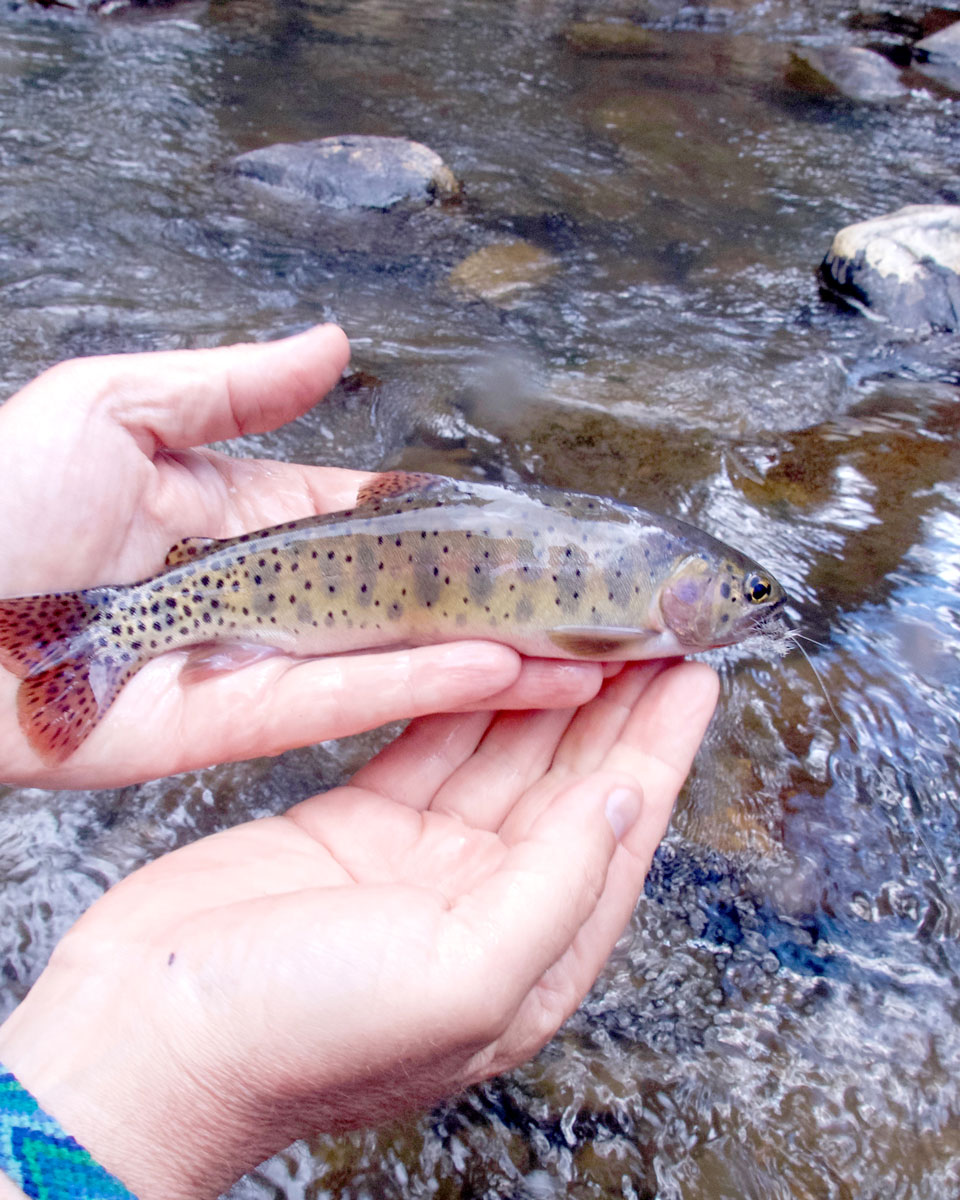By TONER MITCHELL
New Mexico is a land of stark contrasts—mountains vaulting up from sagebrush plains, canyons gashed in the earth. In contrast, the Tusas Range in the north central part of the state are hardly noticeable. They rise so gradually west of the Rio Grande gorge that you hardly know they’re there, or that they hide a few of the most precious trout streams New Mexico has to offer.
Originating just north of Highway 64 west of Tres Piedras, the Rio Tusas offers rainbow cutthroat hybrids down to its confluence with the Rio Vallecitos, which is a wonderful fishery in its own right, out of the way and full of rainbows and browns. Buy yourself a Carson National Forest Motor Vehicle Use map to get the lay of the land. I assume that as northern New Mexicans, we all know that a road on the map doesn’t necessarily mean a road in real life, or at least a road that one should travel without the right kind of vehicle. Nowhere is this more true than in the area between Highway 64 and Highway 84 near Ghost Ranch. Consider yourself warned.
The next drainage west from the Vallecitos is (the other) El Rito Creek, a gem of a stream abounding in solitude and harboring Rio Grande cutthroat trout. To get there, cross the gorge bridge and catch Highway 285 in Tres Piedras or at Carson. Head north on Highway 111, and at La Madera, you’ll pick up Highway 554, which will take you to the village of El Rito (not Questa’s El Rito but El Rito Grande!). From there you’ll take County Road 280, which takes you north along El Rito Creek until it breaks west towards Canjilon.
Make sure you’re aware of where you are on these creeks, as there is a decent amount of private land. Otherwise, you’ll want to wade wet, no waders necessary due to the heat you’ll most likely encounter. Anticipate extremely slick wading on the Vallecitos. It’s one of the greasiest streams I’ve ever fished.
Due to their small size, these creeks fish best with flies or extremely small Panther Martin spinners. I prefer dry flies, either an attractor like a red Royal Humpy or something to match the omnipresent grasshoppers and ants. Like everywhere in el norte, July is when the spruce moths blow up, so bring a supply of blonde Elk Hair Caddis in size 14 or 12. In the canyon of the Vallecitos you’ll encounter some deeper pools. That’s where you’ll be able to throw a spinner. Dropping a beadhead nymph, a prince, or zebra midge perhaps: below a grasshopper will also work.
These creeks can definitely sustain a good harvest (within the law, of course). Cutthroats should be released, as they’re hanging by a thread in these drought-stricken times. Though most of your fish will be on the small side, there is always a chance for a big brown on the Vallecitos. They’re spooky though, so make sure you look before you cast.
I keep hoping some of the beaver activity I’m seeing in the Tusas area will expand, as it will lead to cooler water temperatures and more consistent water flows later in the season. I know the benefits of beavers are not widely believed yet, but hopefully the day will come soon when we realize what a blessing these animals can be to our fishing and our communities. Mainly I just like catching bigger fish.
If you could use a break from the same old fishing routine, give the Tusas Range creeks a try; if not for the fishing, for the jaw-dropping scenery you may not know exists.




